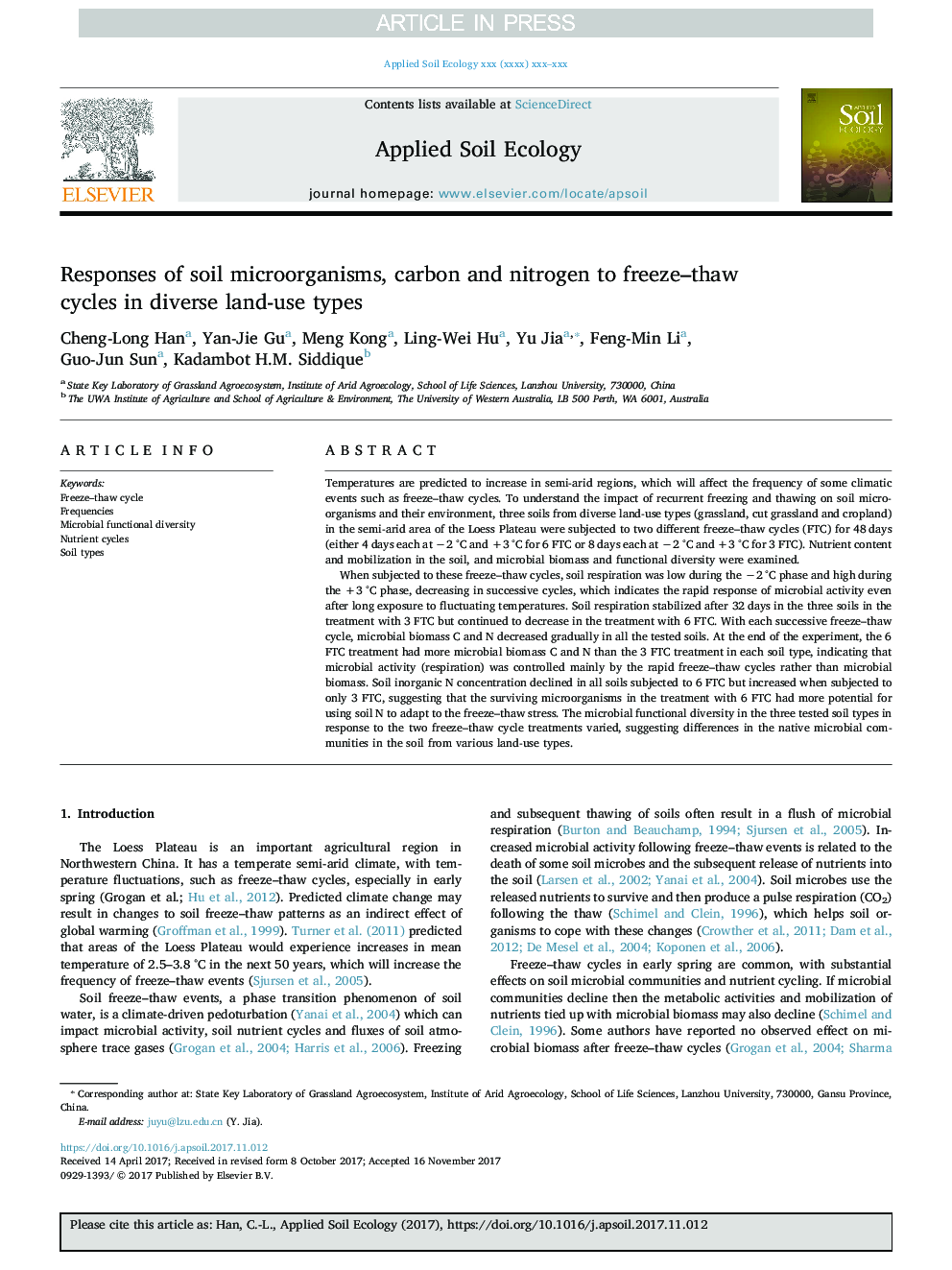| Article ID | Journal | Published Year | Pages | File Type |
|---|---|---|---|---|
| 8846788 | Applied Soil Ecology | 2018 | 7 Pages |
Abstract
When subjected to these freeze-thaw cycles, soil respiration was low during the â2 °C phase and high during the +3 °C phase, decreasing in successive cycles, which indicates the rapid response of microbial activity even after long exposure to fluctuating temperatures. Soil respiration stabilized after 32 days in the three soils in the treatment with 3 FTC but continued to decrease in the treatment with 6 FTC. With each successive freeze-thaw cycle, microbial biomass C and N decreased gradually in all the tested soils. At the end of the experiment, the 6 FTC treatment had more microbial biomass C and N than the 3 FTC treatment in each soil type, indicating that microbial activity (respiration) was controlled mainly by the rapid freeze-thaw cycles rather than microbial biomass. Soil inorganic N concentration declined in all soils subjected to 6 FTC but increased when subjected to only 3 FTC, suggesting that the surviving microorganisms in the treatment with 6 FTC had more potential for using soil N to adapt to the freeze-thaw stress. The microbial functional diversity in the three tested soil types in response to the two freeze-thaw cycle treatments varied, suggesting differences in the native microbial communities in the soil from various land-use types.
Related Topics
Life Sciences
Agricultural and Biological Sciences
Ecology, Evolution, Behavior and Systematics
Authors
Cheng-Long Han, Yan-Jie Gu, Meng Kong, Ling-Wei Hu, Yu Jia, Feng-Min Li, Guo-Jun Sun, Kadambot H.M. Siddique,
